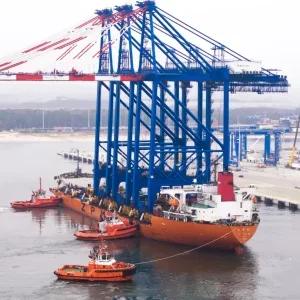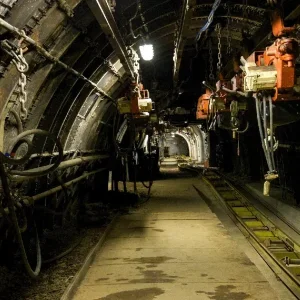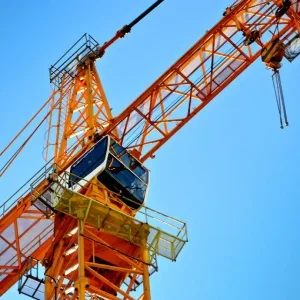The cranes are AIST 6, Class 3, and are rated for severe continuous duty. Their unique four-girder configuration on a 60ft span includes two larger girders 25ft apart, equipped with a main 100t trolley, plus two smaller girders holding a 40 US ton auxiliary trolley that runs between the two sets of ropes for the main hoist.
The main hoist lifts the ladle, while the auxiliary is able to tip and pour the ladle in either direction as the container of hot molten nickel, or matte, moves from one converter to the next along the converter aisle.
The crane also carries ladles to an area where slag is poured off. At the end of the converter process, the crane transports the molten matte, now 80% pure nickel, to the granulator where it is blown into “peanut-sized” pieces for further refining elsewhere in the plant.
David Clamp, regional sales manager for Konecranes, said: “Key features of the cranes are redundant controls and mechanics, including motors, drums, gear machinery and electrical systems, plus wired-in spare inverters ready to go to work at the flip of a switch.”
The cranes are designed to operate reliably in the sulfurous atmosphere of the converter aisle, with special protection for all exposed devices. They replace two 60 US ton DC-powered cranes built 40 years ago and, with other process improvements, will nearly double throughput from 65,000 to 100,000 US tons per year. They will be installed in an existing building.
“The 16-wheel design, spreading the wheel loads, was the result of Xstrata’s request to offer cranes that could work in the existing space, without modifications to the structure,” said Tom Laughlin, Konecranes project manager. “Using this design strategy, Xstrata did not need to increase existing rail size or reinforce the runway girders in the building,” he added.
Xstrata will construct a 60x100ft addition to the building where the cranes can be installed without impacting production. When Konecranes completes crane installation and load testing (scheduled for May 2009), the wall between the two areas will be removed and the old cranes taken out during the first two or three days of a planned two-week shutdown.






